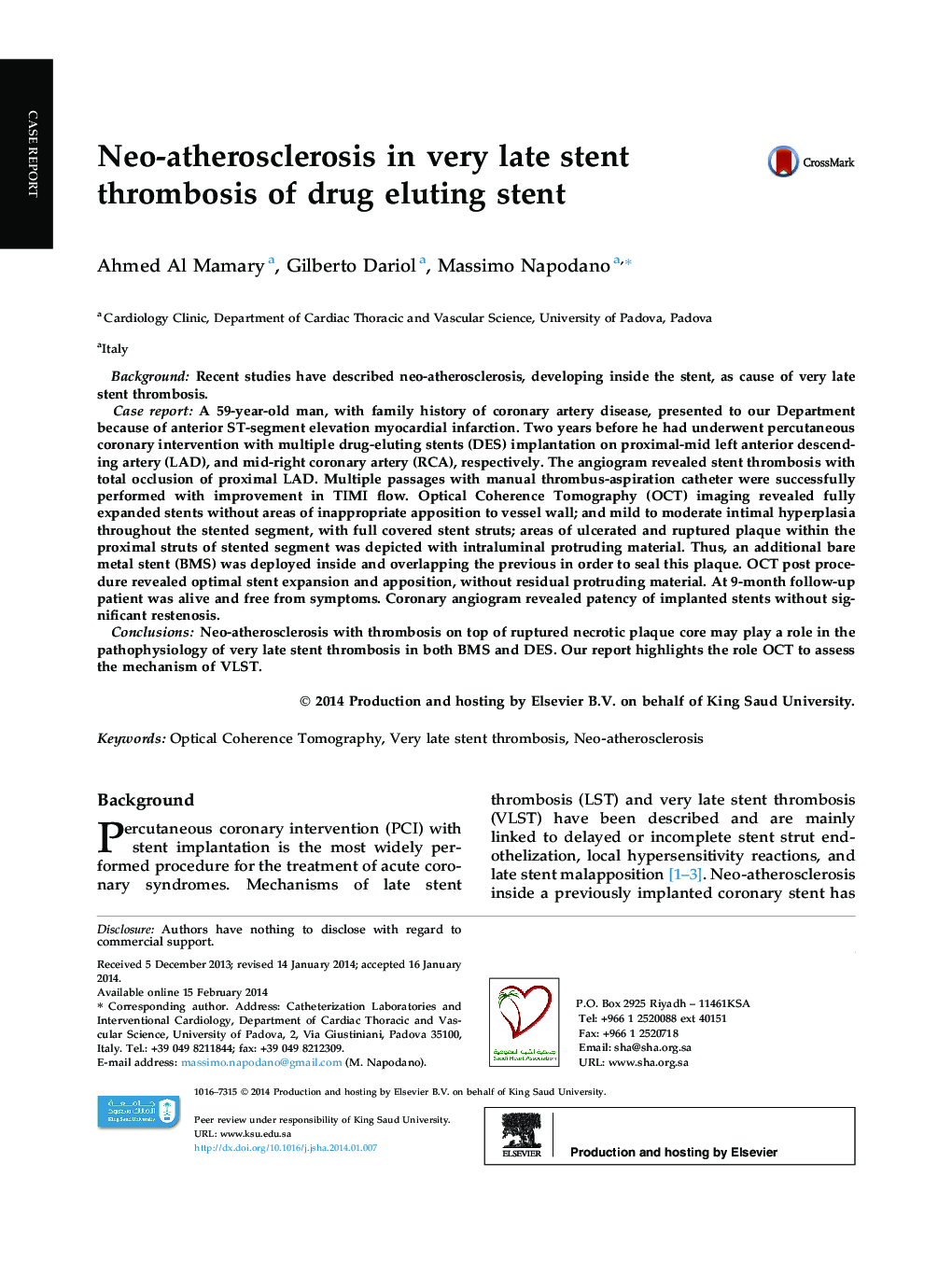| Article ID | Journal | Published Year | Pages | File Type |
|---|---|---|---|---|
| 2978171 | Journal of the Saudi Heart Association | 2014 | 5 Pages |
BackgroundRecent studies have described neo-atherosclerosis, developing inside the stent, as cause of very late stent thrombosis.Case reportA 59-year-old man, with family history of coronary artery disease, presented to our Department because of anterior ST-segment elevation myocardial infarction. Two years before he had underwent percutaneous coronary intervention with multiple drug-eluting stents (DES) implantation on proximal-mid left anterior descending artery (LAD), and mid-right coronary artery (RCA), respectively. The angiogram revealed stent thrombosis with total occlusion of proximal LAD. Multiple passages with manual thrombus-aspiration catheter were successfully performed with improvement in TIMI flow. Optical Coherence Tomography (OCT) imaging revealed fully expanded stents without areas of inappropriate apposition to vessel wall; and mild to moderate intimal hyperplasia throughout the stented segment, with full covered stent struts; areas of ulcerated and ruptured plaque within the proximal struts of stented segment was depicted with intraluminal protruding material. Thus, an additional bare metal stent (BMS) was deployed inside and overlapping the previous in order to seal this plaque. OCT post procedure revealed optimal stent expansion and apposition, without residual protruding material. At 9-month follow-up patient was alive and free from symptoms. Coronary angiogram revealed patency of implanted stents without significant restenosis.ConclusionsNeo-atherosclerosis with thrombosis on top of ruptured necrotic plaque core may play a role in the pathophysiology of very late stent thrombosis in both BMS and DES. Our report highlights the role OCT to assess the mechanism of VLST.
